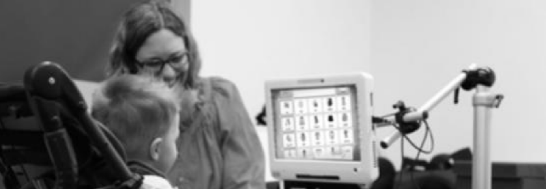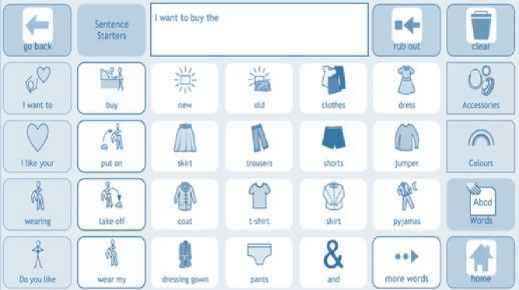XMA in Partnership with outstanding specialist school
Making a difference to learning
Dorothy Goodman School is an Outstanding (Ofsted 2016) Special School serving pupils from 3-19 and supporting parents and guardians. It caters for pupils with a wide range of special educational needs. In recognition of the diversity of their pupils, the School tailors their curriculum to meet the needs of each individual pupil. This is supported by the School’s extensive equipment and facilities, such as Soft Play Room, Hydrotherapy Pool and Sensory Room, which are all used to support and educate pupils.
The School awarded XMA the contract for the design, supply, delivery, installation, testing, commissioning and ongoing support of the ICT infrastructure. XMA worked closely with Dorothy Goodman School and SEND Specialists, iansyst, to deliver state-of-the-art devices, systems and support.
Exceptional ICT for an exception student body
Pupils and staff use ICT to enable rich communication and expression. “For example, in one class, two pupils with profound communication and physical needs were able to confidently express their choices and engage in meaningful communication with the adults.” Ofsted Report 2016
Sensory rooms and sensory spaces use light and sound or even darkness to enable children with various abilities, including Profound and Multiple Learning Difficulties to develop skills such as switching and cause and effect to colour or hand eye coordination skills, additionally, it supports learners with Autistic Spectrum Disorders to relax or be engaged in their environment. Music linked to light has found to be supportive for either calming pupils or raising their attention levels.
The most common device for pupils is iPad, typically with a ‘voice box’ to ‘speak’ for pupils. From this, many pupils run an application called Grid Player, made by Smart Box. Grid Player is an Alternative and Augmentative Communication (AAC) App that helps people who cannot speak or who have unclear speech to communicate. Pupils create sentences on their iPad that speak aloud.
Pupils with motor disabilities are able to utilise Grid Player and other Smart Box applications using Eye Gaze, which mounts on iPad or Windows tablet.

The range of input devices is as diverse as the pupil population. These include a huge variety of switches (USB, Wi-Fi or Bluetooth), joysticks, trackballs and special keyboards. The goal always being to provide the best possible interface for pupils to express themselves and control their environment.

Google’s speech to text enables other pupils to create documents using speech within Google’s GSuite for Education.
In short, together with the School and XMA’s SEND specialist partner iansyst, the School is able to rapidly draw upon thousands of IT solutions for the needs of each and every child.
ICT challenges and resolutions
The School faces many daily challenges that arise from the variety of needs within an All-through
Special School. They were looking for a partner who can provide flexibility in the delivery of service and one with the expertise to respond quickly to their many needs. We demonstrate this below through some examples of the challenges we have resolved together during our six-year partnership:
The School’ split network made it difficult for information to be accessed and teachers had to navigate around this issue by carrying dongles across all sites to access the network and complete their work.
XMA resolved this problem through clear communication, detailed planning and a thorough execution.
By working with the School’s previous on-site engineer, XMA was able to analyse the issue and build a secure configuration for the ICT systems. This allowed us to join the networks into one unified collaboration platform. Our solution enabled teachers to have easy and instant access to the network regardless of the site and without the provision of dongles, which is better for data access and security. This meant that all educators were able to work more efficiently to create and deliver engaging lessons.
With difficulty logging in across different sites for pupils and teachers due to different systems,
XMA consolidated all usernames and passwords across all sites on one domain, which allowed for a more streamlined and secure logging in process.
The School site spreads across five different locations, two main sites – the upper school and a lower school – with three inclusive satellite bases located on the sites of local mainstream schools.
The School’s XMA Technician Tom is involved in liaising with all existing stakeholders, across all 5 sites and those of the mainstream schools. This means that Tom has to be organised in documenting and reporting his conversations and agreements so that he can relay accurate information and advice for all interested parties. He is responsible for coordinating the relevant departments at XMA and updating the Service Desk system for the purposes of resiliency and escalation.

